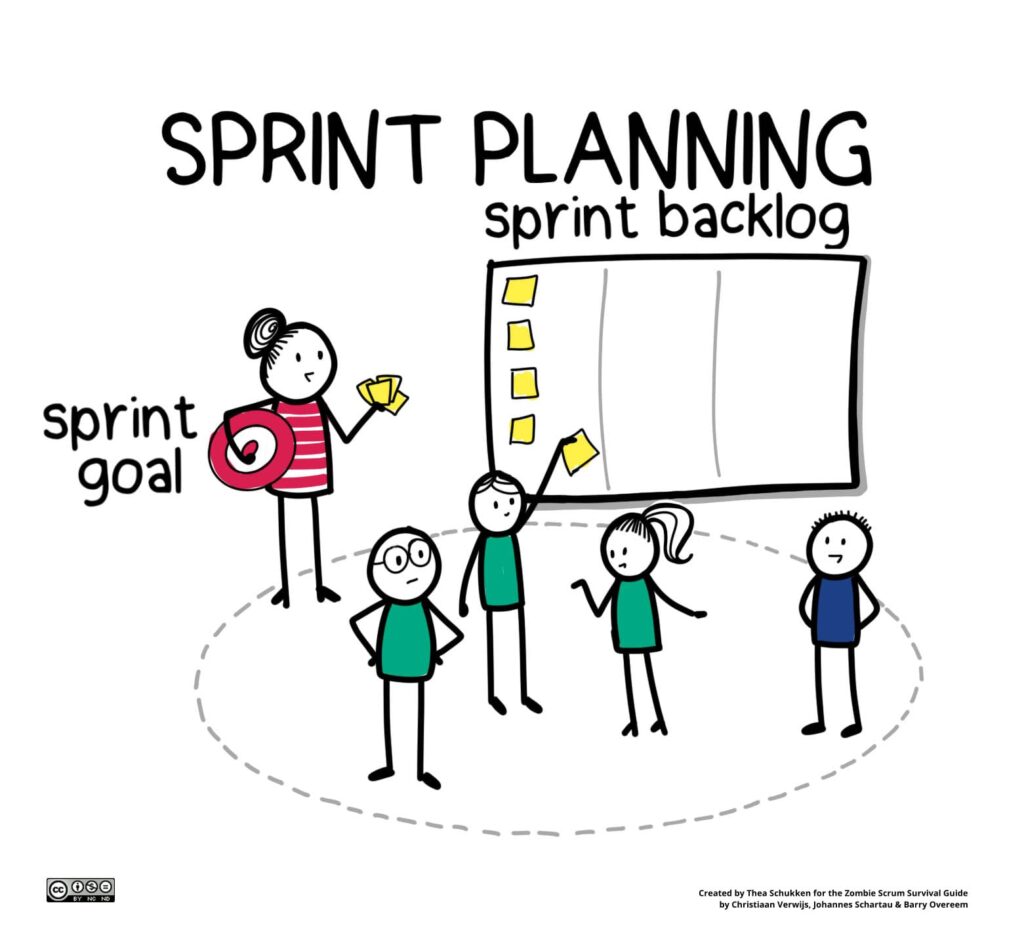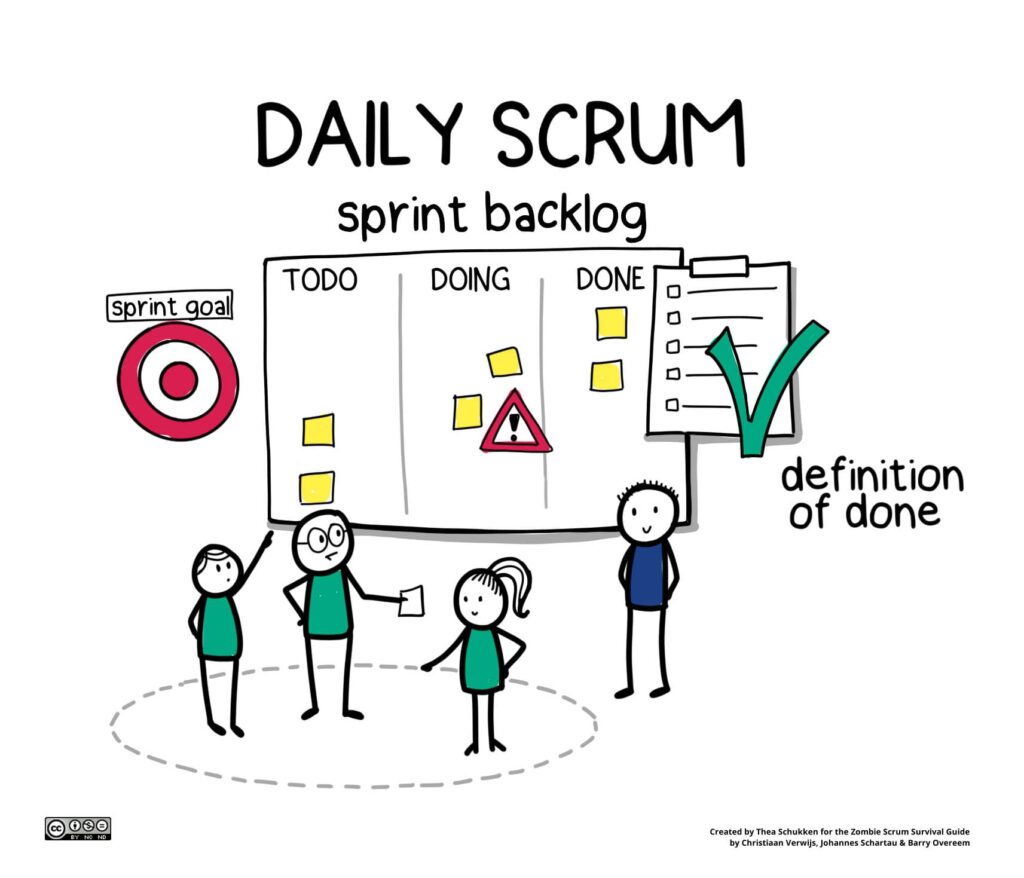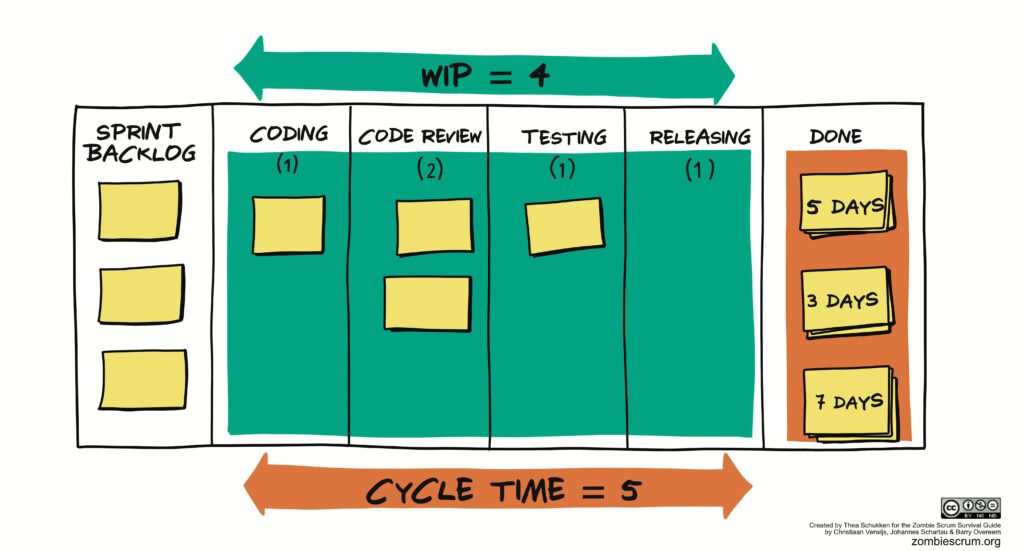artefacts
the backlog
The backlog It’s a decision-making artefact that helps you estimate, refine, and prioritize everything you might sometime in the future want to complete. It helps ensure the team is working on the most important and valuable features, fixing the most important bugs, or doing other important work critical to product development.
The backlog, therefore, is tremendously helpful in situations when you are unable to do everything being asked (so, in most cases) or in contexts when even a tiny amount of planning will help a lot (so, in most contexts).
Many think of this backlog as a to-do list and define it in precisely this way, as a list of things you must do to deliver your product to market.
Teachers create their backlog based on the structure and steps of the lesson.


the sprint
A sprint in Scrum is a short period wherein a development team works to complete specific tasks, milestones, or deliverables. Sprints, also called “iterations,” essentially break the project schedule into digestible blocks of time in which smaller goals can be accomplished.
Sprints typically do not extend longer than one calendar month. Some teams might work in two-week sprints, while others might prefer weekly sprints. Monthly sprints might make more sense for more complex projects, as they give contributors more time to complete tasks and showcase accomplishments.
Teachers, when they design their lessons, they create the Sprints. The Sprints take into consideration many aspects of the learning, such as the subject, how many hours of teaching, and the level of difficulties
scrum board
The exercise is interactive and is raising the energy levels of the participants. To my surprise the exercise also serves as a great ice breaker and team builder since it creates opportunity to get to know each other better by exposing each other to morning habits and personal context, such as where do I live, who prepares breakfast for the kids, whether I’m used to doing Yoga or never miss my favorite podcast…or any other thing people choose to do in the morning – so it becomes really funny and fun.
Here are the steps I take to run the exercise:

the Story Map always shows how each story fits in the whole application
The primary purpose of Story Mapping is to facilitate learning discovery and prioritization of learning work. The Story Map always shows how each story fits in the whole application.
User story mapping is a collaborative exercise that helps align cross-functional teams around building knowledge. For this reason, any team whose work will contribute to the successful delivery of lesson value should be represented.
User story mapping visualizes a student’s journey with a lesson from beginning to end. It includes all the tasks they’d typically complete as part of that journey.
A user story map helps you arrange user stories into a helpful model for understanding the functionality of a lesson, identifying holes and omissions in your backlog, and effectively plan holistic releases that deliver value to students through releases named Sprints.
